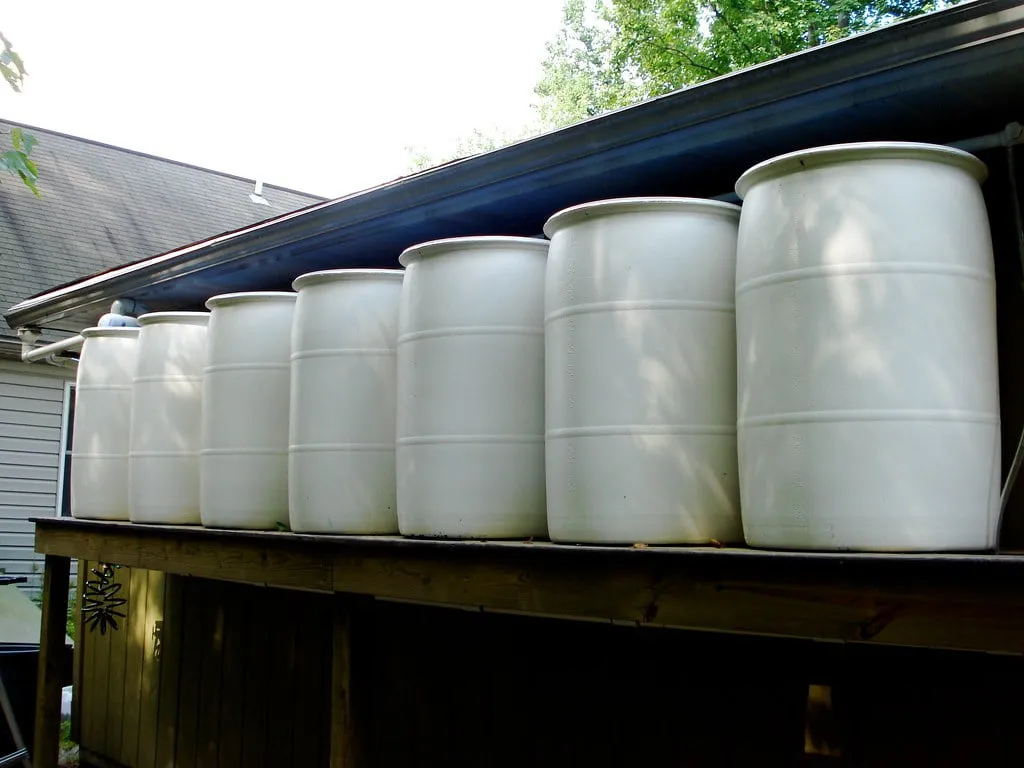Transforming your home into an eco-friendly haven benefits the environment, enhances your quality of life, and can lead to significant cost savings. By undertaking green home improvement projects, you contribute to a sustainable future and create a healthier, more efficient living space. Below are 15 impactful eco-friendly home renovation ideas to consider:

5 Eco-Friendly Home Renovation Ideas Outside the Home
- Install Solar panels: Harnessing solar energy is a powerful way to reduce reliance on fossil fuels. Solar panels convert sunlight into electricity, lowering energy bills and carbon footprint. While the initial investment can be substantial, many regions offer tax incentives and rebates to offset costs. Additionally, installing solar panels can increase your property’s value, making it a worthwhile long-term investment.
- Install a Rainwater Harvesting System: Rainwater harvesting systems collect and store rainwater for later use, reducing reliance on municipal water supplies. Depending on the system’s complexity and local regulations, the collected water can be used for irrigation, flushing toilets, or even laundry.
- Create a Sustainable Landscape: Designing a sustainable landscape involves planting native species, reducing lawn areas, and incorporating water-saving techniques like drip irrigation. These practices conserve water, reduce maintenance, and support local ecosystems. Additionally, a well-designed landscape can enhance property aesthetics and value.
- Plant a Green Roof or Living Wall: Green roofs and living walls are covered with vegetation, providing natural insulation, reducing stormwater runoff, and improving air quality. These installations can also lower energy bills by absorbing heat and keeping your home cooler during summer. Moreover, they offer aesthetic appeal and can support biodiversity in urban areas.
- Start a compost bin: Composting organic waste like food scraps and yard debris reduces landfill usage and produces nutrient-rich soil for gardening. It is a simple yet effective way to contribute to a circular economy and enhance your garden’s health.

Two separate chambers allow one side to finish composting while leaving the other to add fresh waste.

10 Eco-Friendly Home Renovation Ideas Inside the Home
- Upgrade to Energy-Efficient Appliances: Replacing outdated appliances with ENERGY STAR-certified models ensures reduced energy and water consumption. For instance, ENERGY STAR refrigerators are about 9% more efficient than non-certified models, potentially saving you $220 over a 12-year lifespan. Similarly, ENERGY STAR dishwashers can save more than 3,800 gallons of water over their lifetime.
- Insulation: Proper insulation is crucial for maintaining indoor temperatures, reducing the need for excessive heating or cooling. Assess your home’s insulation, especially in attics, walls, and basements, to identify areas for improvement. Upgrading insulation can lead to significant energy savings and increased comfort.
- Install a Programmable Thermostat: Programmable thermostats allow you to set specific temperatures for different times of the day, optimizing energy usage. These devices can significantly reduce heating and cooling costs by automatically adjusting the temperature when you’re away or asleep. Some advanced models even learn your habits and adjust settings for maximum efficiency.
- Use Low-VOC Paints and Finishes: Traditional paints can release volatile organic compounds (VOCs) into your home’s air, affecting indoor air quality. Opting for low-VOC or zero-VOC paints minimizes exposure to these harmful chemicals, creating a healthier living environment. Brands like Valspar offer such eco-friendly options.
- Upgrade to LED Lighting: LED bulbs consume up to 90% less energy than incandescent lights and have a longer lifespan. You can significantly reduce energy consumption and maintenance costs by replacing traditional bulbs with LEDs. This simple switch is one of the most cost-effective ways to enhance your home’s energy efficiency.
- Install a Solar Water Heater: Solar water heaters utilize the sun’s energy to heat your home’s water supply, reducing reliance on gas or electric heaters. Although the upfront cost may be higher, the long-term savings on energy bills and the environmental benefits make it a worthwhile investment.
- Install a Tankless Water Heater: Tankless water heaters heat water on demand, eliminating the need for a storage tank and reducing energy consumption. They are more efficient than conventional water heaters and can provide continuous hot water. While the initial cost may be higher, the energy savings and extended lifespan can offset the investment.
- Install a Home Energy Management System: A Home Energy Management System (HEMS) monitors and controls your home’s energy usage, providing insights into consumption patterns. By identifying areas of high energy use, you can make informed decisions to reduce waste and improve efficiency.
- Replace Old Windows with Energy-Efficient Models: Old, drafty windows can lead to significant heat loss. Upgrading to energy-efficient windows with double or triple glazing reduces heat transfer, enhancing comfort and lowering energy bills. This improvement also contributes to better sound insulation and increased property value.
- Use Recycled, Repurposed, or Reclaimed Materials: Incorporating recycled, repurposed, or reclaimed materials into your home improvement projects reduces the demand for new resources and minimizes waste. This approach adds a unique character to your home and supports sustainable practices in the construction industry.

Wrapping Up
Transforming your home with eco-friendly improvements reduces your ecological footprint and enhances your living experience, saving you money in the process. Remember, sustainable living isn’t an all-or-nothing endeavor—every step, big or small, counts.
Adopting even a few of these eco-friendly home renovation ideas makes a meaningful contribution toward a healthier planet and a brighter future. Start today, and discover just how rewarding green home improvements can be.
For tips to your inbox once a week and more exclusive content, subscribe today.





